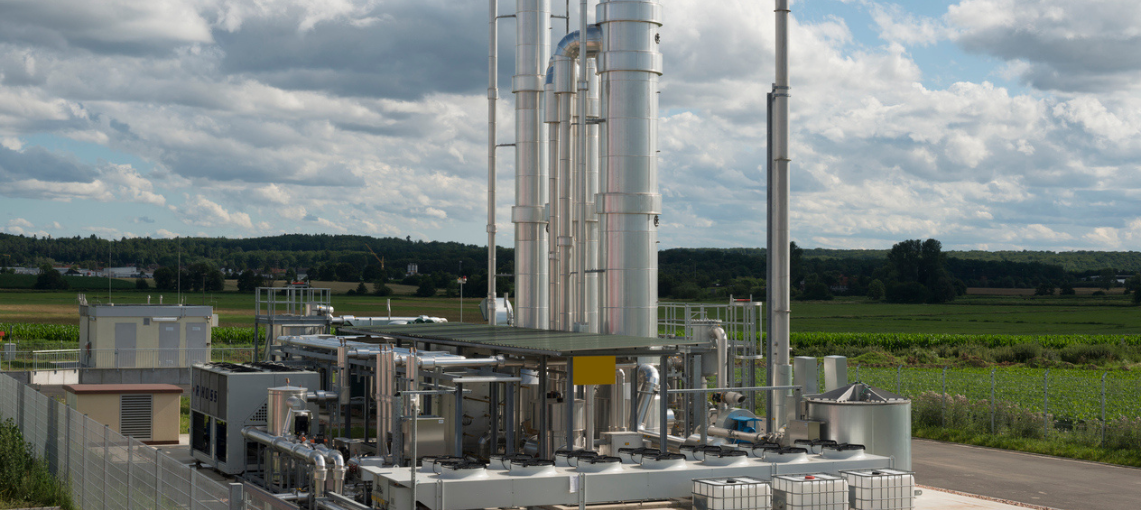Sustainability in the fuel industry: diesel and biofuels
Carbon neutrality – or net zero – is a stated goal for many businesses, cities, countries, and international organisations across the world. But to achieve this goal, significant change is required. Here, we look at hydrotreated vegetable oil (known as HVO), an alternative fuel source that could play a big role in decarbonizing commercial vehicles.
With the move to electric vehicles, the future for passenger vehicles seems settled for the moment. That said, the diversity of vehicles on our road means the transition from gasoline won’t be linear, as there is no single replacement for all applications of diesel engines.
The challenge is significant. It’s estimated that if EV sales grow up to 60% over the next 30 years, only around 40% of cars on the road would be EV by 2050. For commercial vehicles, particularly in the large-scale haulage and transport sectors, the mid-term future has a place for diesel. While diesel engines are still being produced and account for most new vehicle registrations – 96.5% of new trucks/lorries in the EU are diesel engines – organizations with fleets will need to embrace technology to meet their climate and sustainability goals.
This is where biofuels like HVO become important – and news that Esso is launching a trial of 25% HVO diesel in the UK means now is an optimal time to examine its viability.
What is HVO?
When we describe biofuel, we are describing any source of energy that comes from plants and animal products. Many biofuels offer an alternative to diesel (biodiesel or FAME is another such alternative). But the most interesting candidate to replace diesel for commercial use, and the focus here, is HVO. Pure hydrotreated vegetable oil (HVO 100) is often made from waste oils (cooking oils, residue animal fats, and similar products), and can be used in all diesel engines.
Hydro-treating, in simple terms, means turning the fats in the oil products into hydrocarbons using hydrogen at high temperatures. This results in a fuel source that is comparable to traditional fossil fuels, but without the same environmental impact.
It’s cleaner and better than diesel by practically every measure. We typically observe that HVO is more efficient than the fossil fuel, but it can be much more expensive. Importantly, it can be used in every application that diesel is used – using the same distribution channels and combustion engines. This makes it a very low-investment option for reducing carbon footprints.
Neste Oil pioneered HVO in around 2010. Global production was at about 5-6 billion litres last year but is expected to grow 500% over the next three years to more than 25 billion litres.
HVO: challenges to adoption
Price and availability of products are the two main barriers to the more rapid adoption of HVO. But there’s no consensus as to whether it is a truly sustainable product or not.
Price – HVO is priced through a similar process to other oil products – so the benchmarking companies Platts and Argus both list HVO as a product. Most supply contracts for oil products are based on these benchmarks, plus numerous tax elements and then logistics/branding and, of course, margins. Public detailed data is not available for these prices – however there is public data to suggest that HVO is typically 20 pence – or a range of 10% to 20% – more expensive than diesel in the UK.
Availability of supply – Whilst supply will grow by 500% from 2020 through 2025, that will only increase availability to 22.5 billion litres. It will clearly struggle to meet the demand for products despite the growth in output. UK Govt figures suggest 26-29% of diesel consumption comes from heavy goods vehicles. This would place UK demand for trucks and lorries alone at 7-8bn litres per year. Unless HVO production increases significantly, heavy goods demand in the UK alone would account for one-third of global supply.
There is also a high capex associated with starting production of HVO, which means that there can be barriers in new suppliers coming to the market. For supply challenges to be met, there will need to be significant investment over the next few years.
Sustainability – There is a certification called the International Sustainability Carbon Certification, which should mean the HVO does not involve palm oil as a source product. There are separate concerns over the waste oil supply chains involved in production.
HVO is most suitable for companies who need to offset carbon – and could be a cheap way of doing it.
We expect biofuels like hydrotreated vegetable oil (HVO) to see a rise in adoption in 2023 and beyond, with the goal for most in the transport sector to meet global emission targets. Already available in many European countries, HVO restrictions have been dropped in many countries, which is expected to further boost the credentials of biofuels as a low-emission alternative to traditional fuels.
The challenges to adoption, namely the increased expense of biofuels and the availability of supply, likely limit the impact these fuels will have on the public at large – as widespread adoption of EV will likely outpace availability of HVO. But for commercial use, organizations should consider the investment as an alternative to electric fleets, where current battery capacities limit long-distance travel, to meet climate goals in the medium term.
Kalibrate’s Tom Hatton reflected on the future for diesel, “It’s worth noting that whilst the total registrations of new trucks/lorries did drop considerably, the pandemic was a catalyst for this, and I expect it has rebounded somewhat. I anticipate that commercial vehicles will remain diesel-powered for quite some time to come and these commercial vehicles will be the primary way that diesel – and subsequently HVO – is used.”
Read more articles about:
Fuel pricingSubscribe and get the latest updates
You may unsubscribe from our mailing list at any time. To understand how and why we process your data, please see our Privacy & Cookies Policy
Related resources
Fuel pricing
Fuel pricing by exception: When do analysts actually analyze?
Managing fuel prices can be time-consuming, especially when analysts spend much of their day on routine tasks....

Fuel pricing
Middle East / Africa - Fuel network planning: Critical insights
Join our team as we look at the key points of insight that fuel network planners need to consider when making...


